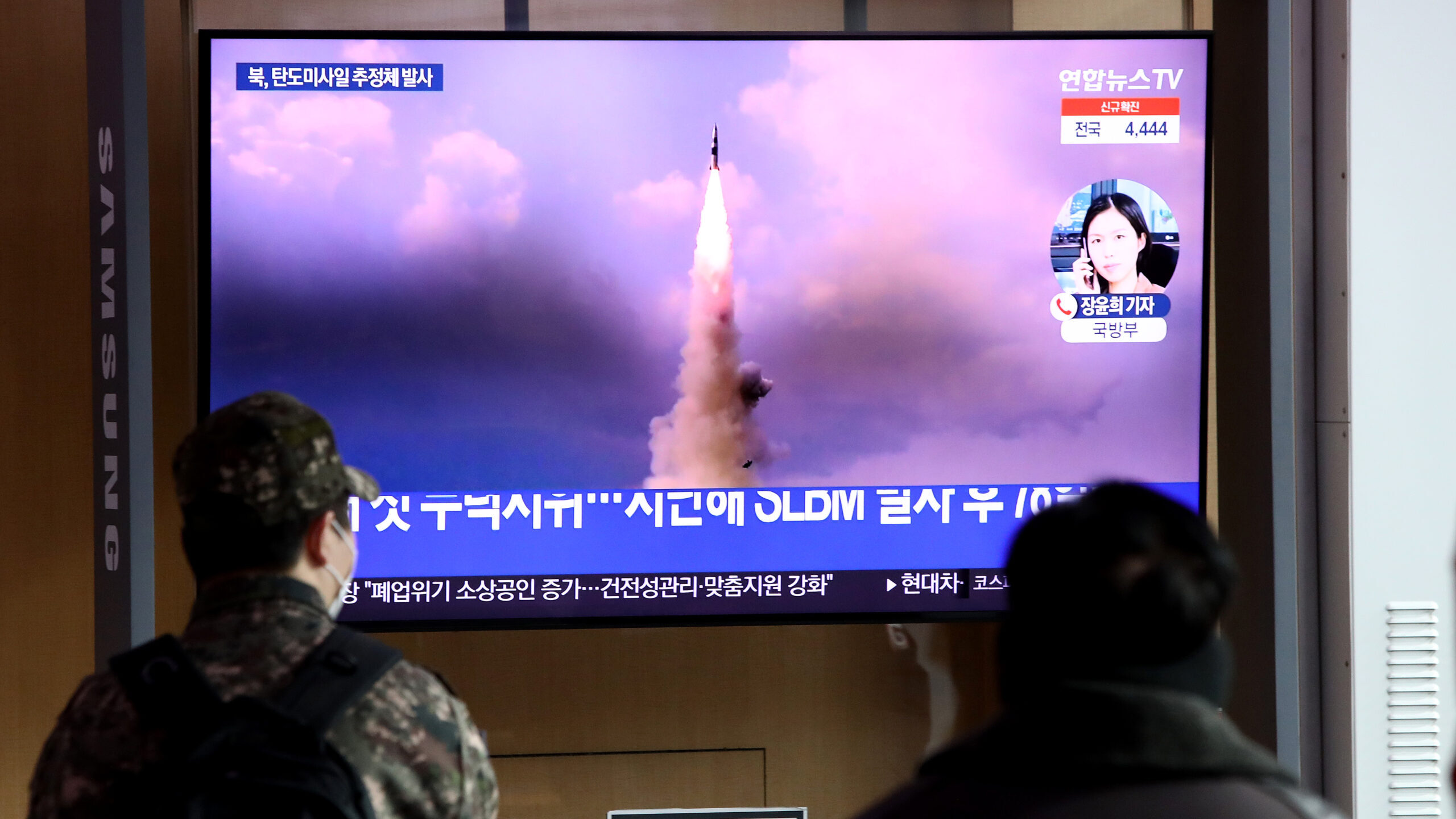
People watch a TV at the Seoul Railway Station showing a file image of a North Korean missile launch, on January 05, 2022 in Seoul, South Korea.(Photo by Chung Sung-Jun/Getty Images)
WASHINGTON: The United States and Japan will sign a new agreement to increase collaboration on research and development activities on emerging technologies, with a special emphasis on advanced space systems and countering hypersonic missiles, Secretary of State Antony Blinken said Thursday.
Blinken announced the agreement as he and Defense Secretary Lloyd Austin met virtually with Japanese Foreign Minister Yoshimasa Hayashi and Defense Minister Nobuo Kishi on Thursday evening.
“When Japanese and American researchers bring their complementary strengths to bear, we can outcompete and out-innovate anyone,” Blinken said in opening remarks. “So we’re eager to dig into these discussions, and to keep strengthening and modernizing this alliance, which is more critical and also more vital than ever.”
RELATED: Not enough US ‘defensive capabilities’ in Asia, says US Army Japan commander
The new agreement was made public just a day after North Korea’s ballistic missile test launch on Wednesday. Later that day, North Korean state media claimed the event constituted its second hypersonic missile test — a statement that South Korea has challenged, according to Reuters.
China has also been ramping up development of hypersonic weapons, most notably testing a fractional orbital bombardment system that deployed a hypersonic glide vehicle over the summer.
“We’re meeting against a backdrop of increased tensions and challenges to the free, stable and secure Indo-Pacific region that we both seek … challenges posed by North Korea’s nuclear ambitions and by the coercive and aggressive behavior of the People’s Republic of China,” Austin said in opening remarks.
US and Japanese officials provided little detail about the nature of the R&D sharing agreement, with a joint statement issued after the meeting saying only that “the ministers committed to pursue joint investments that accelerate innovation and ensure the Alliance maintains its technological edge in critical and emerging fields, including artificial intelligence, machine learning, directed energy, and quantum computing,”
One of the few concrete deliverables from the meeting: Japan and the US agreed to conduct a joint analysis on how best to cooperate on counter-hypersonic technologies.
The agreement comes just months after the US signed the surprise AUKUS security arrangement with Australia and the UK, largely seen as a response to China. That deal also dealt with sharing research into emerging technology, but is much more expansive and notably includes Australia receiving the tech to produce its first nuclear-powered submarines.
Iran says it shot down Israel’s attack. Here’s what air defense systems it might have used.
Tehran has been increasingly public about its air defense capabilities, including showing off models of systems at a recent international defense expo.


























